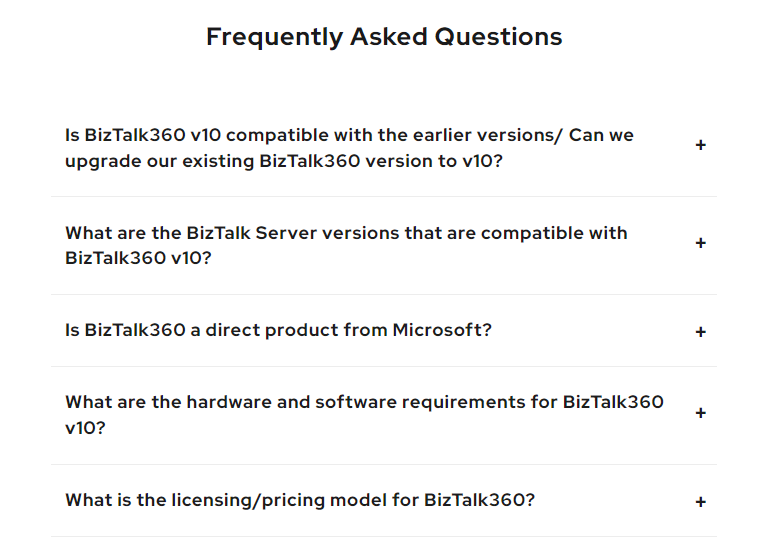Want to create a knowledge-sharing culture in your organization? Wondering what value it brings overall?
Did you know that 35% of institutional knowledge is unique to the individual?
Understand it like this – when an employee leaves his job or shifts to a different role, it leaves a knowledge gap, and his co-workers are unable to do 35% of his job. Now that’s scary, isn’t it?
Not just this, an average US worker wastes more than 5 hours every week waiting for vital information from their colleagues or trying to recreate knowledge that already exists.
This results in not just precious hours going to waste, but also:
- Frustrated employees
- Delayed projects
- Missed opportunities, etc.
Eventually, all this is going to hurt your bottom line, and you don’t want any of this!
Creating a knowledge-sharing culture is the ultimate solution to it, and that is exactly what we are going to address in this article.
So, without any further ado, here we go!
What is a Knowledge Sharing Culture?
Before we get into the steps of creating a knowledge culture, let us first understand the basics – what is it anyway?
Simply put, it is an organizational culture that encourages and facilitates knowledge sharing of all kinds, between people and between the organization and the individual.
Think about it, what is the most important asset of your organization? The people who work with it right? And what makes them so valuable? Their knowledge, experience, and attitude.
So, knowledge sharing is the optimization of the most important asset of your organization – your employees’ knowledge and experience.
That is why knowledge sharing is of two types :
Explicit knowledge sharing – Explicit knowledge is the most basic form of knowledge and can be easily expressed, interpreted, and documented. Your company FAQ pages, whitepapers, documents, etc. are all examples of explicit knowledge. Here’s an example:

Because it is easy to codify, explicit knowledge is shared easily too. In fact, you can share it in a couple of ways:
- Explicit to explicit knowledge sharing involves converting explicit knowledge into other forms so everyone can access and use it. Converting Word documents into PDFs is an example, or making a team document available on an organizational drive is another example.
- Explicit to tacit knowledge sharing involves transforming the knowledge in such a way that people can imbibe it and make it their own. For example, creating user videos, or how-to guides.
Tacit knowledge sharing – Tacit knowledge is what differentiates an outstanding employee from a good one – knowledge gained through experience. Leadership can be a big example here, sales tactics are another. So while explicit knowledge is extremely important, it is just the tip of the iceberg. Tacit knowledge is the rest of it!
Tacit knowledge cannot be easily documented or codified, as it is subjective and cognitive. It is mostly shared through brainstorming, collaborative working, experience-sharing, etc. Here’s an example of visual brainstorming:

Let us now look at the multiple benefits of knowledge sharing in your workspace.
How to Create Knowledge-Culture in Workspace
Remove the barriers
Before you start building a knowledge-sharing culture, you must be all set to foresee the common barriers against it and tackle them as they come.
Here are those barriers and how you tackle them:
Lack of time – Let’s admit it, we are busy people. And just like I made a case for you to understand how important knowledge sharing really is for your organization, you must do the same for your employees.
Unless they understand how their life and work are going to improve by it, they will not take their precious time out for sharing knowledge.
Resistance to change – Who has the patience to do things differently when everything is going well with the routine?
The solution? Start slow and steady, and start with areas where your employees will start to see the change immediately.
For example, start with making the most vital information available to them so they can see an immediate boost in their productivity.
Complicated tools – The knowledge-sharing tool you choose can make all the difference in how willingly and quickly your team embraces this change. Unnecessarily complicated tools will make them resist the process and make it difficult.
On the other hand, sophisticated tools for knowledge sharing will empower them with easy solutions. Make your pick wisely.
Job insecurity – Some employees may think that sharing their knowledge will make them replaceable. So, they decide to hoard their knowledge and become resistant to the whole process.
Now, this is a very genuine issue given our competitive work environments. And the only solution is to make sure that you give the credit where it is due. Do not forget to recognize your employees for sharing their knowledge and doing a good job of it.
Establish an open-door policy
How comfortable do you feel approaching a senior person at your organization and asking them questions? If your answer is ‘very comfortable’, you are in luck, you have a great knowledge-sharing culture already.
But if your answer is no, there is scope for improvement.
By establishing an open door policy, you remove the judgment around asking questions among peers and also approaching senior people. So, people feel comfortable asking questions and sharing in turn too.
Promote knowledge sharing
As we discussed earlier, you must give your employees the right reason why they should participate in your building of a knowledge-sharing culture. This way, you will not be forcing it on them but promoting it.
Another way of promoting it is putting recognition and rewards in place for sharing their knowledge. These rewards can be virtual like virtual badges, and also real-life like free lunches, vouchers, discounts, etc. This will make them curious and encourage them to be actively engaged in the process.
Also, you must facilitate knowledge sharing by fixing dedicated time for it weekly for both on-ground and remote employees. This will kickstart the whole thing, and also give consistency to the process of knowledge sharing going ahead.
And last but not least, sometimes you need to let your employees know the value of their knowledge. Reinforce the message that no knowledge is insignificant or not worth sharing.
Deploy the right tools for knowledge sharing
All your policies and promotions can only come into action with the deployment of the right tools for knowledge sharing. These can range from internal knowledge base software to knowledge management software and knowledge-sharing platforms.
The point is, that it must be easy for your employees to share their knowledge and access the knowledge that exists. These tools will also store the knowledge properly in an organized manner for future use.
Train with mentorship and work shadowing
Just like the most effective way to learn a new language is by interacting with the people who speak that language, new hires can learn knowledge sharing best from their co-workers.
Choosing a mentor who is adept at knowledge sharing in this case, can instill confidence in the new hire by giving him practical ways to start contributing their knowledge right away. And when a new hire shadows an existing employee, he can see how knowledge-sharing happens day-to-day and how the knowledge-sharing tools are used.
Handle employee mistakes patiently
You know it. Implementing new technologies and systems takes its own sweet time. And while you may do everything from training to promoting the knowledge-sharing tools and culture, you must allow your employees the time to make it their own.
Letting them know that any mistakes in the learning phase are OK, will encourage them to use the new technology more openly.
Plan social gatherings to foster camaraderie
How can I forget to emphasize the importance of fostering a personal connection between colleagues? Nothing can replace a one-to-one conversation and the bonds that form over meeting each other casually.
That is why you must encourage them to not make these gatherings about work. Some ways you can do this is by planning fun activities, games that everyone can participate in, or even picnics.
It is only when your employees know each other and trust each other to a certain extent, that your knowledge-sharing culture will bloom.
Interested in Document360 Knowledge base? Schedule a demo with one of our experts
Book A Demo
Benefits of Knowledge Sharing in Workspace
Mitigate risk and reduce mistakes
What is the most frustrating drawback of the lack of information to your employees? Repetitive mistakes and the risk of having unhappy customers, right?
Well, you can avoid this by putting proper knowledge-sharing systems into place. When knowledge is easily accessible to everyone, they are less prone to mistakes and hence reduce the risk of internal and external grievances.
Tacit knowledge sharing is also a big part of it because sometimes people need to reach out to their colleagues for answers based on experiences. And with a healthy knowledge-sharing culture, that becomes possible.
Increased productivity and less exhaustion
According to research by McKinsey, an average interaction worker spends about 20% of his time looking for internal information or tracking down colleagues who can help with specific tasks.
Note the word ‘interaction worker’ here. These are the people who undertake tasks that are anything but routine. Think managers, salespeople, and customer service reps.
Their work revolves around interacting with other employees, customers, and suppliers and making complex decisions based on knowledge, experience, and instinct.
Now imagine 20% of these valuable people struggling 1 out of their 5-day workweek looking for information. Awful, right?
You can stop this wastage and exhaustion by developing a knowledge-sharing solution like an internal knowledge base. This will also give an immense boost to the productivity of your workforce.
Improved personal development and team morale
By promoting a knowledge-sharing culture, you are directly contributing to the personal development of your employees. Because whether employees are consuming explicit information, or taking an active interest in tacit knowledge, they are becoming wiser people.
Such people result in more skillful teams that are full of confidence. When teams possess knowledge and easy access to information, it boosts their morale and they can work with more dynamism.
Enhanced problem-solving and room for innovation
Knowledge is power. And if relevant knowledge is easily accessible in your organization, this power comes into the hands of your employees.
With the help of this knowledge, your employees can solve problems better and faster.
Also, tacit knowledge sharing is key to innovative capability as it is difficult to replicate by others. And when you do this right and promote it in your organization, naturally the employees will have a heightened sense of inventiveness in them as they feel more confident.
Eventually, innovation is what is going to set your organization apart from the crowd. Remember Tesla?
Also Read: 7 Best Knowledge-Sharing Tools in 2023
Better organizational synergy and goal achievement
A wonderful thing that happens because of knowledge sharing is that all your employees are on the same page.
With all of them able to access best practices, company values, core goals, and objectives at any given point in time, every individual becomes aware of the bigger picture, which is critical in the long term.
Especially if you have remote teams or a hybrid work culture where people rarely meet each other, or visit the organization, this can change the game.
As knowledge sharing fosters collaboration through the exchange of information between teams and departments, it also means that your business moves forward with greater synergy to achieve organizational goals.
So now that you know how beneficial knowledge sharing is, let us jump right into how to create an effective knowledge culture in your workspace.
Wrapping Up
As a company, it is your responsibility to give your employees all the tools that will help optimize their efforts. After all, you don’t want them wasting time looking for information when they should really be innovating and taking your company to the next level.
From this article, it is clear that to do that, creating a knowledge-sharing culture with the help of tools like knowledge-based platforms is crucial. So, choose one that suits your company the best and start building an awesome culture in your workplace.
We wish you all the best!
An intuitive internal knowledge base software to easily add your content and integrate it with any application. Give Document360 a try!
GET STARTED




 –
– 

